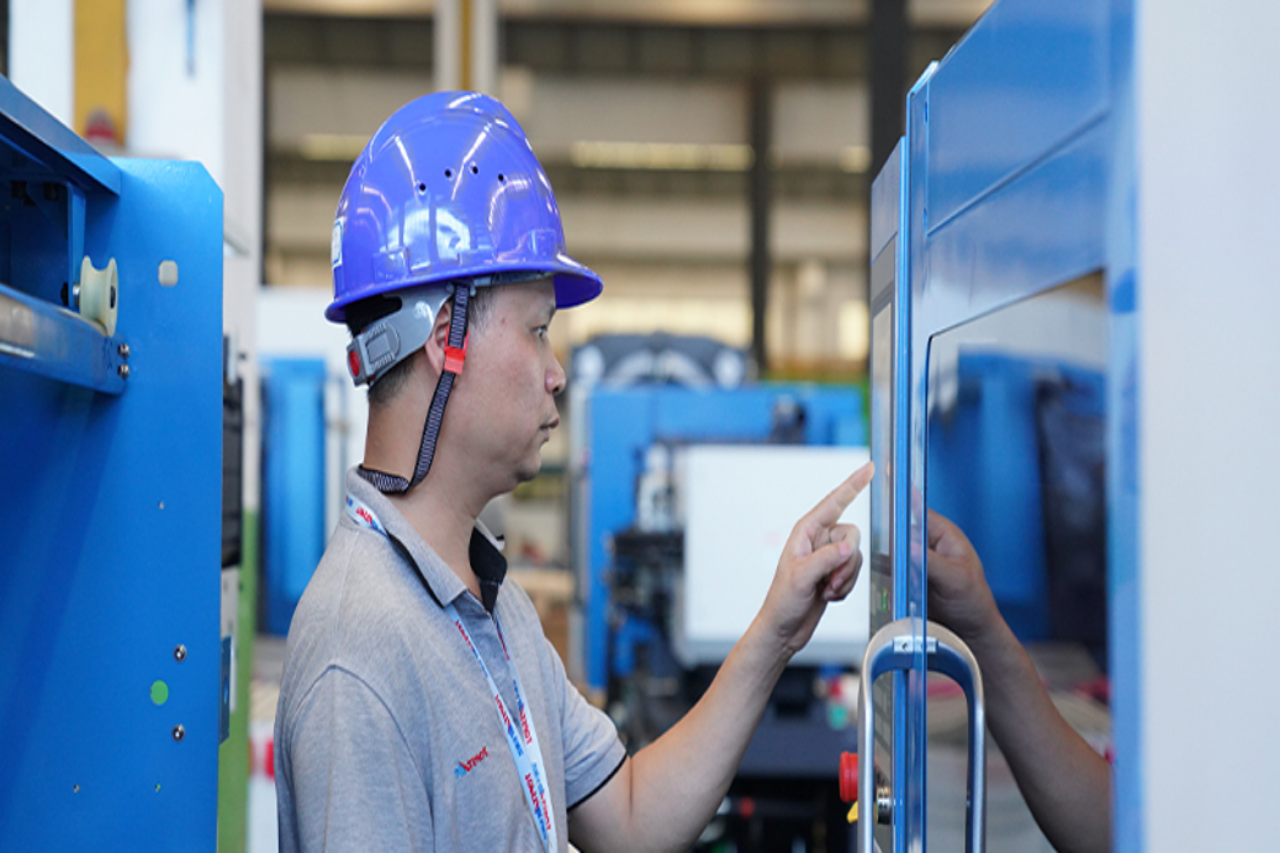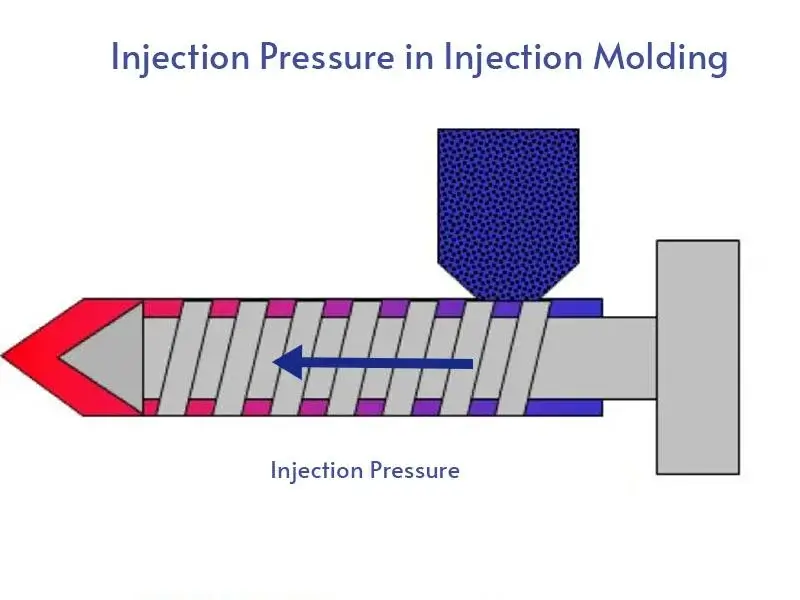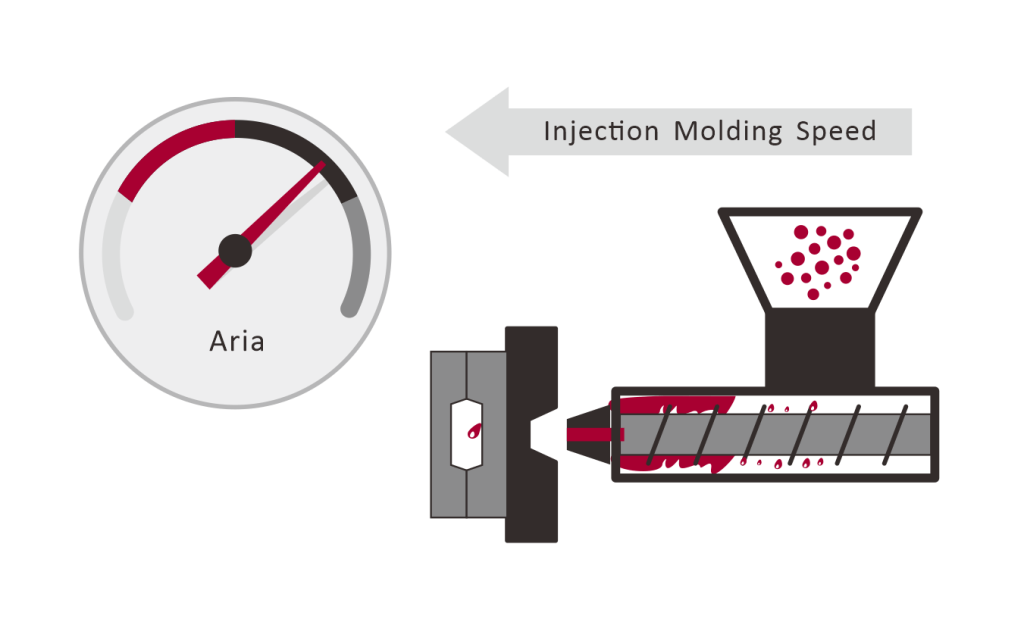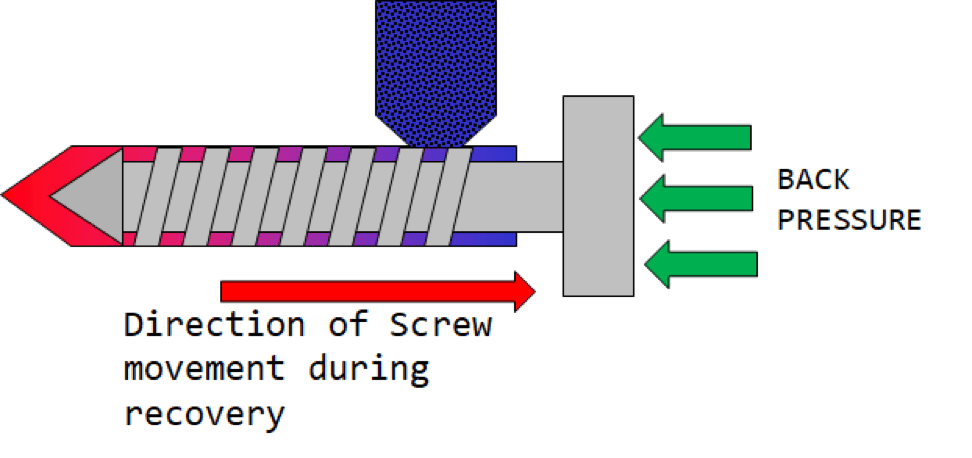How to adjust the settings of plastic injection molding machine to improve product quality?
2024/12/02 By Topstar

Injection molding is a standard manufacturing process for producing plastic products in the automotive, medical, and consumer electronics industries. The quality and precision of your products depend on the performance of the plastic injection molding machine you use and the settings of the plastic injection molding machine. A high-performance plastic injection molding machine with properly adjusted settings can improve product quality, reduce defects, and increase production efficiency. In this guide, we will share with you how to change the settings of the plastic injection molding machine to achieve better product quality. No matter what type of product you produce, the correct settings can significantly impact the molding process results.
Adjusting the injection pressure of a plastic injection molding machine
One of the most critical settings of a plastic injection molding machine is the injection pressure. Proper pressure control is essential to ensure that the molten plastic fills the mold cavity correctly and manufactures parts with uniform density, precise dimensions, and a smooth surface finish.
When adjusting the injection pressure, the operator must consider various factors, such as the type of plastic material used, the geometry of the mold, and the complexity of the part being produced. Different materials have different flow characteristics, so specific adjustments are required to ensure proper filling and reduce defects. For example, high-viscosity materials may require higher injection pressures to flow through narrow channels or fill complex mold cavities. In comparison, low-viscosity materials may require lower pressures to avoid overfilling or excessive material waste.
At the same time, they also depend on the part’s geometry and design complexity. Parts with small, complex features may require higher pressures. A suitable injection pressure can also achieve optimal part filling.

Adjusting the mold temperature of the plastic injection molding machine
The mold temperature can directly affect the flow of molten plastic and the cooling rate of the finished part during the injection molding process. When your mold temperature is too high, it will cause too much material flow, resulting in excessive extension or unclear contours of the part. On the other hand, too low mold temperature will cause the plastic to solidify prematurely, resulting in defects such as flow marks, jetting, or poor bonding between layers in multi-material parts. To improve product quality, we must adjust the mold temperature according to the materials used and the required part characteristics. In addition, we also need to use a mold temperature controller to control the temperature of the plastic injection molding machine mold to obtain smoother surfaces, tighter tolerances, and more consistent part quality.
Optimize injection speed to ensure accuracy and consistency
Injection speed refers to how quickly the machine injects plastic into the mold cavity during the molding process, and it also significantly impacts the final part quality. When you set the injection speed too high, it will cause a variety of problems. The molten plastic may fill the mold too quickly, resulting in incomplete filling or cold sealing, and the material cannot bond properly. It can also cause excessive shear, resulting in material degradation, warping, or turbidity in the molded part. You need to use a lower injection speed to reduce the risk of material degradation if the material is shear-sensitive (such as PEEK or PPS, etc.).

Control back pressure to ensure stable material flow
Back pressure refers to when the plastic injection molding machine is in dissolution. The rotation of the screw pushes the material to accumulate in the front section of the screw, and the material exerts a backward thrust on the screw. The injection cylinder controls the pressure of the screw retreat. Higher back pressure promotes better mixing of polymers, resulting in a more uniform melt. The increased pressure helps break up any unmelted polymer or clumps of material, ensuring that the material fully melts before injection into the mold. On the other hand, low back pressure allows the material to flow more freely, reducing the machine’s power consumption and shortening cycle times. However, setting the back pressure too low will result in poor mixing of the material and affect the uniformity of the final part.

In all models of Topstar’s plastic injection molding machine series, except for some older models, the other models (TM ll, TE ll) use proportional back pressure. It can adjust the back pressure in real-time based on factors such as material type, mold design, and part geometry. The back pressure is dynamically adjusted throughout the injection cycle, allowing the machine to respond to viscosity changes or other situations that may occur during production.
Comprehensive monitoring of injection molding machine settings to ensure high-quality production
Topstar’s injection molding machines have monitoring systems that provide real-time feedback on these settings. Sensors and data analysis tools can track parameters such as pressure, temperature, speed, and torque, and the operator can make adjustments based on real-time data through the control panel during production. By fully monitoring and adjusting settings, you can ensure that your injection molding process remains efficient, reliable, and able to produce high-quality parts consistently. You must carefully set each parameter, whether adjusting injection pressure, controlling cooling rates, or optimizing cycle times, to achieve the desired part quality and maintain production standards.
Comprehensive guarantee of molded product quality
From injection pressure and mold temperature to cooling time and injection speed, each setting plays a critical role in the injection molding process’s outcome. Whether you are producing medical parts or consumer electronics, optimizing these parameters can ensure that your parts meet the required specifications, have minimal defects, and are produced efficiently.
TRENDING POSTS
- What factors can cause delays in the injection molding process of plastic molding machine? 2024/12/02
- Exhibition Review| Topstar participates in InterPlas Thailand 2024 2024/12/02
- Star Case | Topstar helps Santong upgrade its intelligent plant 2024/12/02
- Topstar Special | National Science and Technology Workers Day 2024/12/02
HOT TOPIC
- .ervo motor-driven linear robots
- 3 axis robot
- 3 axis robots
- 3 in 1 Compact Dehumidifying Dryer
- 3-axis robot
- 3-axis robots
- 5-axis CNC machine
- accuracy
- Air Chillers
- all electric injection molding machine
- all electric injection molding machines
- All-electric injection molding machines
- and overall production quality. Therefore
- AP-RubberPlas
- automated injection molding machine
- Automation changed engineering
- automation of injection molding robots
- auxiliary machine
- Bench Injection Molding Machine
- Cabinet dryer manufacturers
- Cabinet dryers
- chiller
- CNC Drilling Machine
- CNC Drilling Machines
- cnc engraving machine manufacturer
- cnc laser cutting machine manufacturer
- CNC machine
- CNC Machine Center
- CNC Machine for Sale
- CNC Machine Manufacturing
- CNC Machine Tool
- CNC machine tool product
- CNC Machining Center
- CNC wood carving machine
- Cooling system
- Cross-Walking Single Axis Servo Cylinder Robot
- Cross-Walking Single-Axis Servo Cylinder Robot
- Cross-Walking Three-Axis/Five-Axis Servo Driven Robot
- cross-walking three-axis/five-axis servo-driven robot
- Dehumidifier Dryer
- Dehumidifying Dryer
- delta parallel robot
- Desktop Injection Molding Machine
- Desktop injection molding machines
- Desktop Molding Machine
- desktop plastic injection machine
- Desktop Plastic Injection Molding Machine
- direct clamp injection molding machine
- Direct clamp injection molding machines
- Dosing & mixing system
- Drilling Centers
- Drying and dehumidification system
- drying and dehumidifying equipment
- Drying and Dehumidifying System
- drying system
- effective and efficient. Cabinet dryers are also used in other industries where large quantities of material need to be dried
- efficient injection molding machine
- elbow hydraulic injection molding machines
- electric injection molding machine
- electric injection molding machines
- energy-efficient injection molding robot
- energy-saving injection molding machine
- etc. Among injection molding robots
- exhibition
- features of CNC machine
- Feeding And Conveying System
- Five Axis Machine Center
- Fully automatic injection molding machine
- Gathering Topstar
- giant injection molding machine
- GMU-600 5-Axis Machining Center
- Granulating & Recycling System
- Heavy duty injection molding machine
- High-precision electric molding machines
- high-precision plastic molding machines
- high-speed all electric injection molding machine
- Honeycomb rotor dehumidifier
- horizontal injection molding machine
- Horizontal Injection Molding Machines
- Horizontal Injection Moulding Machine
- Horizontal Mixer manufacturer
- How The CNC Machine Works
- hybrid injection molding machine
- hydraulic injection molding machine
- Hydraulic Injection Molding Machines
- in this article
- Industrial robot
- Industrial Robot Chinese brand
- industrial robot parts
- industrial robot supplier
- Industrial robots
- Industry Chain
- Injection Manipulator
- injection manipulator robot
- injection mold machines
- Injection molding
- Injection molding automation
- Injection Molding Automation Solution
- injection molding dryer
- Injection molding equipment
- injection molding hopper dryer
- Injection molding machine
- injection molding machine brand
- Injection Molding Machine Factory
- Injection Molding Machine Manufacture
- Injection molding machine manufacturer
- injection molding machine manufacturers
- Injection molding machine procurement
- injection molding machine robotic arm
- injection molding machine with a robot
- Injection molding machines
- injection molding material dehumidifying
- injection molding plant
- Injection Molding Robot
- injection molding robot arm
- Injection molding robot automation
- Injection molding robotic arm
- injection molding robots
- Injection moulding machine
- Injection Moulding Robots
- Injection Robot
- Injection robot arm
- Injection robot manufacturer
- Injection robot wholesale
- injection robots
- intelligent injection molding machines
- Introducing Injection Robot
- It is the best choice for drying large quantities of material at once. Cabinetmakers use these machines because they are fast
- large injection molding machine
- large injection molding machines
- Learn what industrial automation and robotics is
- linear robot
- linear robots
- low speed sound-proof granulator
- machine plastic molding
- make sure to add some! Improvements (2) Keyphrase in introduction: Your keyphrase or its synonyms appear in the first paragraph of the copy
- manipulator machine
- manufacturing
- medical grade injection molding machines
- medical injection molding machine
- medical injection molding machines
- micro injection molding machine
- middle speed granulator
- Mini CNC machine manufacturers.
- Mold Temperature Control System
- mold temperature controller
- mold temperature controllers
- molding material Dehumidifying System
- mould temperature control system
- mould temperature controller
- mould temperature controllers
- New electric injection molding machine
- nitrogen dryer manufacturer
- nitrogen dryer system manufacturer
- Oil type mold temperature controller
- Oil type mold temperature controllers
- open day
- Outbound links: No outbound links appear in this page. Add some! Images: No images appear on this page. Add some! Internal links: No internal links appear in this page
- PET Preform injection molding
- phone case maker machine
- phone case making machine
- plastic bottle making machine
- plastic bottle manufacturing
- plastic bucket making machine
- plastic bucket manufacturing
- Plastic chair making machine
- plastic forming equipment
- plastic hopper dryer
- plastic injection machine
- plastic injection machines
- plastic injection molding
- Plastic injection molding equipment
- Plastic injection molding machine
- Plastic Injection Molding Machines
- plastic injection moulding machine
- plastic injection robot
- Plastic Molding machine
- Plastic Molding Machines
- plastic molding press
- plastic moulding machine
- plastic phone case making machine
- plastic-molding machine
- powerful granulator
- Powerful Type Sound-Proof Granulator
- precision injection molding
- precision injection molding machines
- production of plastic seats
- pure water mould temperature controller
- Robot injection molding
- robot injection molding machine
- robot manufacturing companies
- Robotic arm for injection molding machine
- robotic injection molding machines
- robotics in injection molding
- SCARA robot
- SCARA robots
- Service-oriented manufacturing
- Servo Cylinder Robot
- servo driven robot
- Servo Driven Robots
- servo injection robots
- servo motor-driven linear robots
- servo-driven 3-axis robot
- Servo-Driven Robot
- Setup of injection machine
- Silicone Injection Molding Machine
- six-axis industrial robot
- Stainless Hopper Dryer
- Stainless Hopper Dryers
- star club
- swing arm robot
- take-out robots
- the choice between servo-driven robots and hydraulic robots will have a certain impact on efficiency
- the most popular injection molding machine
- the type of injection molding robot
- toggle clamp injection molding machine
- Toggle Hydraulic Injection Molding Machines
- toggle injection molding machine
- Top 10 brands of injection robots
- Topstar
- Topstar Engineering
- Topstar Industrial Robots
- Topstar injection molding intelligent
- Topstar Scara Robots
- Useful Injection molding machine
- Vertical machining centers
- volumetric type blender
- water chiller
- water chillers
- water distributor
- water type mold temperature controller
- Water Type MoldTemperature Controller
- Water-Type Mould Temperature Controllers
- We often face choices when performing injection molding. We will choose the type of injection molding machine
- wholesale of injection molding machines
- x carve CNC
